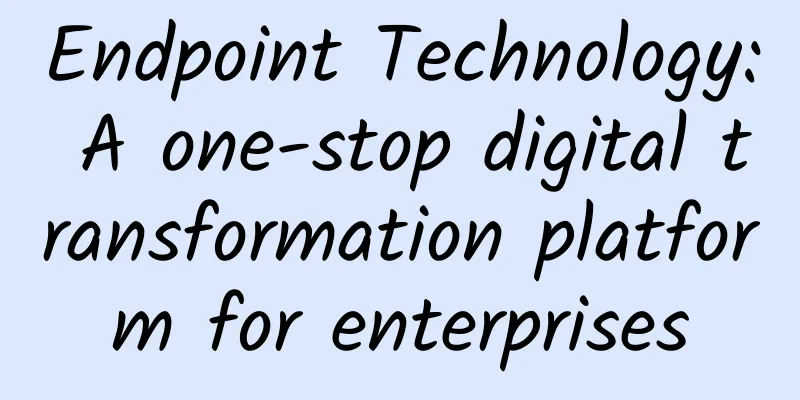From concept to implementation, blockchain's diversified applications activate the big data economy

|
As Bitcoin hits new highs again and again this year, its underlying technology, blockchain, has also entered an explosive phase. McKinsey recently submitted a blockchain technology report to the U.S. Federal Insurance Advisory Committee, which called the period from 2009 to 2016 the "Dark Ages," during which all blockchain solutions were based on Bitcoin. The new era of blockchain will begin in 2016, and more than 100 blockchain technology solutions have been explored. McKinsey believes that based on the current development speed of blockchain, blockchain solutions may reach their full potential in the next five years. At the Consensus 2017 Global Blockchain Conference in May this year, hundreds of blockchain experts and thousands of practitioners from around the world gathered in New York to discuss the industry trends of blockchain from concept to implementation. As the world's first company to invest in open source blockchain communities and enterprise-level blockchain solutions, IBM has spared no effort in recent years to promote the industry application of blockchain and actively expand the application space outside the financial industry. At Consensus 2017, IBM introduced the exploration of blockchain technology in retail, freight, health and medicine and other industries. Ding Gangyi, dean of the School of Software at Beijing Institute of Technology, said at the IBM University Education Cooperation Summit held in June this year that blockchain is expected to solve the problem of big data, and the real way to realize big data may be blockchain technology.
Blockchain application from 1.0 to 2.0 era Why is it said that blockchain is expected to solve the problem of big data? Ding Gangyi believes that blockchain solves two key problems in big data applications: secure data transactions and exchanges, and data ownership. Whether it is big data trading or using big data, the most important thing to maximize the value of big data is data value mining, which encounters two major obstacles: security and value ownership. If security is not guaranteed, data value assets may be improperly used, thereby reducing the willingness of enterprises to trade data. Data value ownership solves the problem of data property rights. The biggest obstacle to the development of big data economy now is that although there are many big data technology platforms, there is no big data to process, or how to further process and use the exchanged big data, etc. There are currently no corresponding legal regulations. Blockchain ensures that the data processing and use process can be traced and recorded through an algorithm mechanism, and can be defined all the way to the ultimate ownership issue. It is a technology that appears when big data has developed to a certain stage and needs to solve problems. As we all know, the basic data structure of blockchain is data blocks, which are linked by hash pointers. By designing algorithms such as "heartbeats", the characteristic values in each data block are updated regularly. In this way, blockchain becomes a distributed peer-to-peer network without a central control point, which can realize a distributed and trusted database architecture. Its characteristics are decentralized storage and data cannot be tampered with, unless the characteristic values on all data blocks can be controlled and changed at the same time within a short "heartbeat" interval, which is almost impossible. Xie Dong, Vice President of IBM and General Manager of China System Laboratory, said that in today's business world, each business participant has its own system, which is not open and transparent, and there are cases of forgery, fraud and denial. Blockchain technology is urgently needed to establish various credible transaction networks to ensure business security and improve processing efficiency, so as to truly activate the big data economy. IBM has applied blockchain technology to multiple fields such as banking, medical care, insurance, retail, and the Internet of Things, and established industry application scenarios, which has brought a lot of opportunities for process optimization and business innovation in business operations. Ding Lei, former head of PayPal's global consumer data science department, recently wrote an article pointing out that blockchain applications are gradually transitioning from the 1.0 era to the 2.0 era. Blockchain 1.0 refers to recording digital currency transactions such as Bitcoin on the blockchain ledger, while blockchain 2.0 will have a wider range of applications in finance and other fields. For example, blockchain as an underlying architecture can serve in the fields of digital asset issuance, copyright protection, and supply chain management. So, as Ding Gangyi pointed out, it is precisely because blockchain technology solves the two key problems of big data applications that blockchain applications can move from the 1.0 era to the broader 2.0 era. China becomes the most active blockchain market in the world In the global blockchain industry, China has become the most active market. At the end of 2016, "blockchain" was written into the "13th Five-Year National Informatization Plan"; at the beginning of 2017, the blockchain-based digital bill trading platform promoted by the central bank was successfully tested. According to relevant statistics, by the end of 2016, there were 105 blockchain-related companies in China. In 2016, the number of new blockchain companies in China exceeded that of the United States, accounting for 28% of the world's new companies. The application of blockchain in the Chinese market has gone beyond the scope of the financial industry. With the help of IBM blockchain technology based on HyperLedger technology, China UnionPay Electronic Payment Research Institute has successfully realized the free exchange of consumption points among China UnionPay card users. After a few simple operations, a consumer can complete the cross-bank point exchange in less than a minute. At the same time, they can also go to any offline supermarket or shopping mall equipped with a smart POS machine to directly scan the code to deduct points and exchange for goods. Various points such as flight mileage, mobile phone charges, gas cards, and catering are also expected to be freely exchanged and redeemed. Why has China become the most active blockchain market in the world? This is mainly because the financial industry is regulated by the government in China, while other non-financial industries have a higher degree of freedom and rich big data to support the blockchain to establish reliable and secure big data applications. Currently, IBM is actively cooperating with more than 400 companies in the fields of financial services, supply chain, Internet of Things, risk management, digital copyright management and healthcare, especially in the Chinese market to activate the commercial application of blockchain through IBM Cloud. Hejia Co., Ltd. is a large group company in southwest China whose main business is supply chain management for manufacturing. Mineral resources such as nonferrous metals and coal in the southwest are relatively scattered, making it difficult and costly to achieve large-scale mechanization. As a result, upstream suppliers are small, weak and scattered, but the demand in the middle and downstream is relatively large. There is overall information asymmetry, large price fluctuations and lack of corresponding credit mechanism in the industrial chain, which makes it difficult for large-scale demanders to purchase and has high transaction costs. In 2016, Hejia Co., Ltd. and IBM China Research Institute jointly developed the Yijian blockchain technology application system for this manufacturing business scenario, using the Hyperledger Fabric platform, which has been put into production. The situation of the pharmaceutical procurement supply chain is very similar to that of the industrial procurement supply chain. Due to the imperfect credit system of small and medium-sized drug dealers themselves and the lack of credit assessment and risk control mechanisms for small and medium-sized enterprises in traditional finance, it is often difficult to obtain financing. After the drug distributor delivers the drugs to the hospital according to the contract, it usually takes 60-90 days to receive the payment. Small and medium-sized drug dealers have difficulty obtaining loans from traditional financial institutions due to their incomplete credit records and inability to provide collateral that meets financing standards. Based on the Yijian blockchain technology platform, Hejia Co., Ltd. has established a trust network among all parties in the pharmaceutical supply chain, and the system is currently in operation. Last October, IBM, Walmart and Tsinghua University jointly announced a collaboration in the field of food safety to improve China's food traceability, transportation and sales methods. The project will use blockchain technology to bring the highest level of trust, transparency, accuracy and efficiency to food supply chain record keeping, aiming to improve food safety on Chinese consumers' tables. Blockchain technology will enable digital tracking of food throughout the entire process, from the supplier ecosystem to store shelves and ultimately to consumers. The records generated by blockchain can help major retailers such as Walmart better manage product shelf life issues at various selling points and further enhance safety measures for food verification. Driven by IBM and other companies, blockchain is being rapidly adopted in multiple industries in the Chinese market, and a trusted big data economy based on blockchain is about to emerge. The blockchain innovation ecosystem is developing rapidly "If blockchain technology was a year of learning and experimentation in 2016, then 2017 is a year of application. IBM hopes to use an open technology ecosystem and mature industry practices to help multiple ecological entities such as enterprise users, developers, and innovation communities to shorten the gap from new technologies to application scenarios." Ying Kangyong, director of mainframe technology support for IBM Greater China, said at the 2017 IBM University Education Cooperation Summit. IBM is a pioneer in enterprise-level secure open source blockchain solutions. As an early member of the Linux Foundation Hyperledger project, IBM is committed to supporting the development of open management blockchains. In 2015, IBM joined the Linux Foundation's Hyperledger project and became a founding member, contributing more than 44,000 lines of code. In order to use blockchain in an enterprise environment, IBM has developed a complete set of enterprise-level blockchain architectures, technologies, products and services. Among them, IBM's blockchain service based on Bluemix allows developers to obtain fully integrated DevOps tools to create, deploy, run and monitor blockchain applications in the cloud. In addition, IBM has set up a service consulting team specifically for blockchain and helped enterprises to develop project consulting processes for blockchain applications. IBM's global interactive experience studio IBM iX also provides joint design services for co-creating blockchain applications with enterprises. For Chinese users, IBM LinuxONE has built a local development environment, where users can apply for an account to get a blockchain development environment. In order to further promote the popularization of blockchain technology, IBM has packaged the HyperLedger blockchain code that has been tested and verified by IBM into a container since mid-October 2016 for developers to download. Beijing Institute of Technology and IBM have been conducting joint research in the blockchain since 2016, opening the LinuxONE Developer Cloud Platform (IBM LinuxONE Community Cloud) port and providing full technical support to help teachers and students use enterprise-level hardware and computing power to develop applications based on IBM LinuxONE, including scenario design and prototype exploration of the consumer points redemption system. The system can realize the free redemption of points in multiple consumer channels such as aviation, hotels, and shopping, and is expected to achieve breakthrough innovative applications in the field of personal consumer transactions. In the second "Peking University Hackathon" (HackPKU) in May 2017, the "Qiyan" chat information fairness application project developed using IBM LinuxONE and blockchain technology won the championship of the competition, and won the "Best Practical Award" for its application prospects in social communication, anti-terrorism monitoring, online public opinion, business meeting records, and corporate collaborative work. Blockchain has become a hot topic among many participating teams in the second "Peking University Hackathon". As Xie Dong said at the 2017 IBM University Education Cooperation Summit, blockchain technology itself has matured, and technology companies such as IBM provide complete technical solutions and consulting services. In addition, there are actual cases that are being rapidly implemented in batches. Blockchain applications are far less difficult than imagined. Next, the enterprise application of blockchain will enter the stage from 1 to N. Driven by the cultivation of basic talents such as "new engineering", it will effectively activate the big data economy and truly open up the space for the new economy. |
>>: CDN+MEC will become the main battlefield in the future
Recommend
6 Examples of How 5G Can Improve IoT Deployments
As digital transformation is in full swing, the n...
Borui Data passed the CMMI Level 5 assessment, the first in the domestic APM field
Recently, Borei Data passed the CMMI Level 5 asse...
Ruijie Cloud Desktop solves financial development and testing problems and is praised by Yixing Rural Commercial Bank!
Technology drives the transformation of the times...
After the confession failed, I understood the principle of TCP implementation
A few days ago, I posted a circle of friends and ...
Distributed current limiting, everything you want to know is here
Preface In a high-concurrency system, it is very ...
A 20,000-word in-depth introduction to distributed systems
WeTest Introduction We often hear about how aweso...
2022 UBBF | Huawei iMaster NCE promotes FTTR intelligent monetization
[Bangkok, Thailand, October 28, 2022] Recently, t...
HTTP, TCP, IP, and Ethernet in one article
This article is reprinted from the WeChat public ...
Apple and Qualcomm reached a settlement, Intel was eliminated, what is the difficulty in Huawei's must-win 5G baseband chip?
A week ago, Qualcomm and Apple, which had once &q...
Huawei's Liu Kang: Practicing what we preach and building a 5G core network for deterministic networks
[Shenzhen, China, July 30, 2020] The 2020 Win-Win...
Explore VLAN aggregation: How to optimize your network performance
VLAN technology is widely used in campus networks...
The difference between SDN and traditional network operation and maintenance
1. Pain points of traditional network operation a...
How far will 5G go on the road to industrial application?
[[377138]] 5G unmanned mines, 5G intelligent tran...
HTTP/3 Principles and Practices
After the HTTP/2 standard was published in 2015, ...









